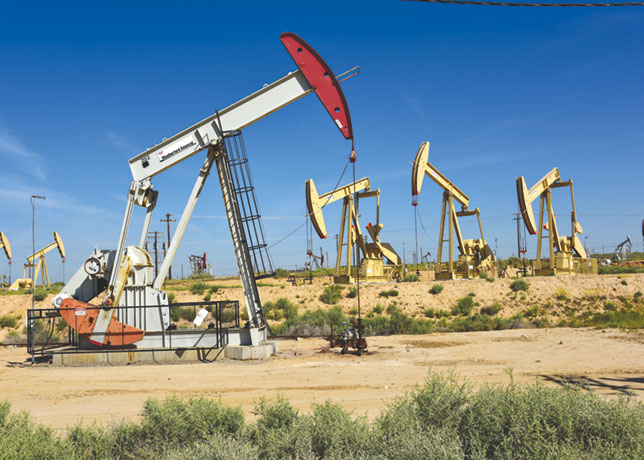
 EOR market projected to surge to $97.88 billion by 2033
EOR market projected to surge to $97.88 billion by 2033
The global EOR market, valued at $52.30 billion in 2023, is projected to reach $97.88 billion by 2033, driven by technological advancements and rising oil demand
The global enhanced oil recovery (EOR) market, valued at $52.30 billion in 2023, is set to experience substantial growth, with projections indicating it will reach $97.88 billion by 2033. This growth trajectory reflects a compound annual growth rate (CAGR) of 6.47 per cent, as detailed in a report by Spherical Insights and Consulting.
The burgeoning demand for oil and gas, coupled with significant technological advancements and supportive government policies, is driving this growth.
Additionally, the adoption of EOR techniques is gaining momentum in developing economies, further fueling the industry's expansion. Notably, North America held a dominant share of 36.27 per cent of the EOR market in 2019, underscoring the region's pivotal role in the sector.
TECHNOLOGICAL EVOLUTION & MARKET DYNAMICS
Enhanced oil recovery, or tertiary recovery, involves advanced techniques designed to extract oil from reservoirs that primary and secondary methods have left untouched.
While traditional recovery methods primarily target mobile oil, EOR focuses on the extraction of immobile oil trapped by capillary and viscous forces.
This shift toward ultimate recovery rather than immediate extraction highlights the technological advancements in the field.
The EOR market is buoyed by the growing focus on maximising oil recovery from mature wells, which often hold significant untapped resources.
This emphasis on extending the lifespan of existing assets is driven by the increasing global demand for oil across various sectors, including transportation, manufacturing, and power generation. As operators seek to meet this demand, the adoption of advanced EOR techniques becomes crucial.
MARKET DRIVERS AND TRENDS
The rise in oil consumption across multiple industries is a significant driver of the enhanced oil recovery market.
EOR techniques offer substantial benefits, including the optimisation of production costs and the reduction of the need for new drilling operations.
For instance, the implementation of CO2-EOR, a method that involves injecting carbon dioxide to enhance oil extraction, is gaining traction due to its dual benefits of increased recovery rates and carbon sequestration.
National oil companies (NOCs) are actively investing in EOR technologies to boost domestic production.
In India, ONGC and IOC have collaborated on CO2 injection projects to enhance oil recovery, while Petroleum Development Oman (PDO) is expanding its production capabilities.
Such investments underscore the global trend toward enhancing domestic oil production to reduce reliance on imports and improve energy security.
CHALLENGES AND MARKET RESTRAINTS
Despite its advantages, EOR faces challenges primarily related to its high cost and technical complexity.
The technology often requires substantial government incentives and innovative investment strategies due to its expensive nature.
Additionally, the global Covid-19 pandemic exacerbated economic uncertainties, leading to reduced oil demand and financial strain on the oil and gas sector.
Many companies have adjusted their capital and operational expenditures in response to these conditions, which could potentially slow the growth of the EOR market.
SEGMENT ANALYSIS
The EOR market is segmented into several key technologies, including thermal injection, gas injection, and chemical injection.
Among these, thermal injection is the most established and widely adopted method, particularly effective for heavy, viscous crude oil.
This method involves introducing thermal energy into the reservoir to lower oil viscosity and enhance recovery.
Gas injection, notably CO2-EOR, is rapidly growing due to its environmental benefits and effectiveness in increasing oil mobility.
Chemical EOR, which utilises water-soluble surfactants and polymers, also plays a significant role in enhancing oil recovery.
REGIONAL INSIGHTS
The EOR market's regional distribution reveals a concentration in North America, driven by extensive adoption in the US.
The US Department of Energy (DOE) is actively collaborating on EOR projects and offering incentives, such as the US Section 45Q tax credit, which supports CO2 storage in EOR activities. Despite the pandemic's impact on crude oil prices, North America's dominance in the EOR market remains significant.
In the Asia-Pacific region, countries like China and India are advancing their EOR projects to bolster domestic production.
China's push for increased oil output and the development of EOR techniques in India and Southeast Asia are contributing to the region's rapid growth in the EOR market.
Europe, led by Russia, is also making strides in the EOR sector, focusing on enhancing production efficiency.
Latin America, with major producers like Brazil and Venezuela, and the Middle East and Africa, are gradually adopting EOR techniques, although the pace has been slower compared to other regions.
RECENT DEVELOPMENTS & FUTURE OUTLOOK
Recent advancements highlight the ongoing evolution of the EOR market. In early 2023, China Petroleum and Chemical Corporation (Sinopec) launched the world's largest green hydrogen-coal chemical project, showcasing a commitment to sustainable energy solutions.
Similarly, Saudi Aramco was last year in the process of identifying fields whose production could be boosted with enhanced oil recovery techniques when a new 9 million mt/year carbon capture hub at the industrial complex of Jubail comes online in 2027.
Also, Abu Dhabi National Oil Company (ADNOC) is exploring carbon capture projects for enhanced oil recovery. The producer had plans to launch carbon capture projects at its Shah gas plant, with the two projects expected to recover almost 4.2 million tpa of CO2 for injection into existing fi elds for enhanced oil recovery.
These developments indicate a growing trend towards integrating advanced technologies and sustainability measures in EOR operations.
The global EOR market is expected to rebound as economic conditions stabilise post-pandemic, with significant opportunities for growth in emerging markets and advancements in recovery techniques.
CONCLUSION
The global enhanced oil recovery market is poised for significant expansion, with its value projected to nearly double by 2033.
Driven by technological innovations, increasing oil demand, and strategic investments, EOR techniques are set to play a crucial role in meeting global energy needs.
Despite challenges such as high costs and economic uncertainties, the market's growth prospects remain robust, supported by ongoing advancements and regional developments.
As the industry navigates the aftermath of the Covid-19 pandemic, the enhanced oil recovery sector is expected to emerge stronger, contributing to both energy security and environmental sustainability.










































































